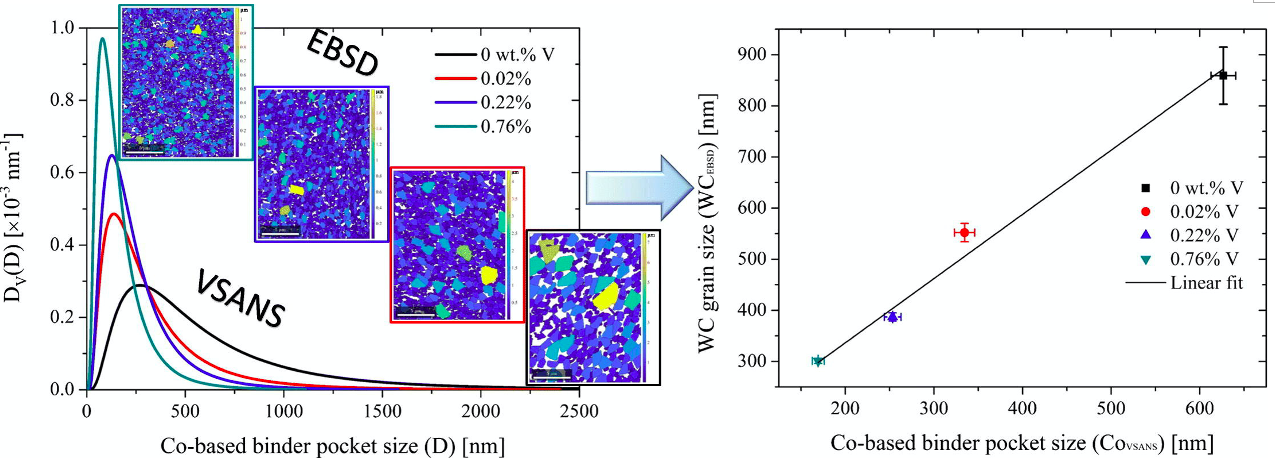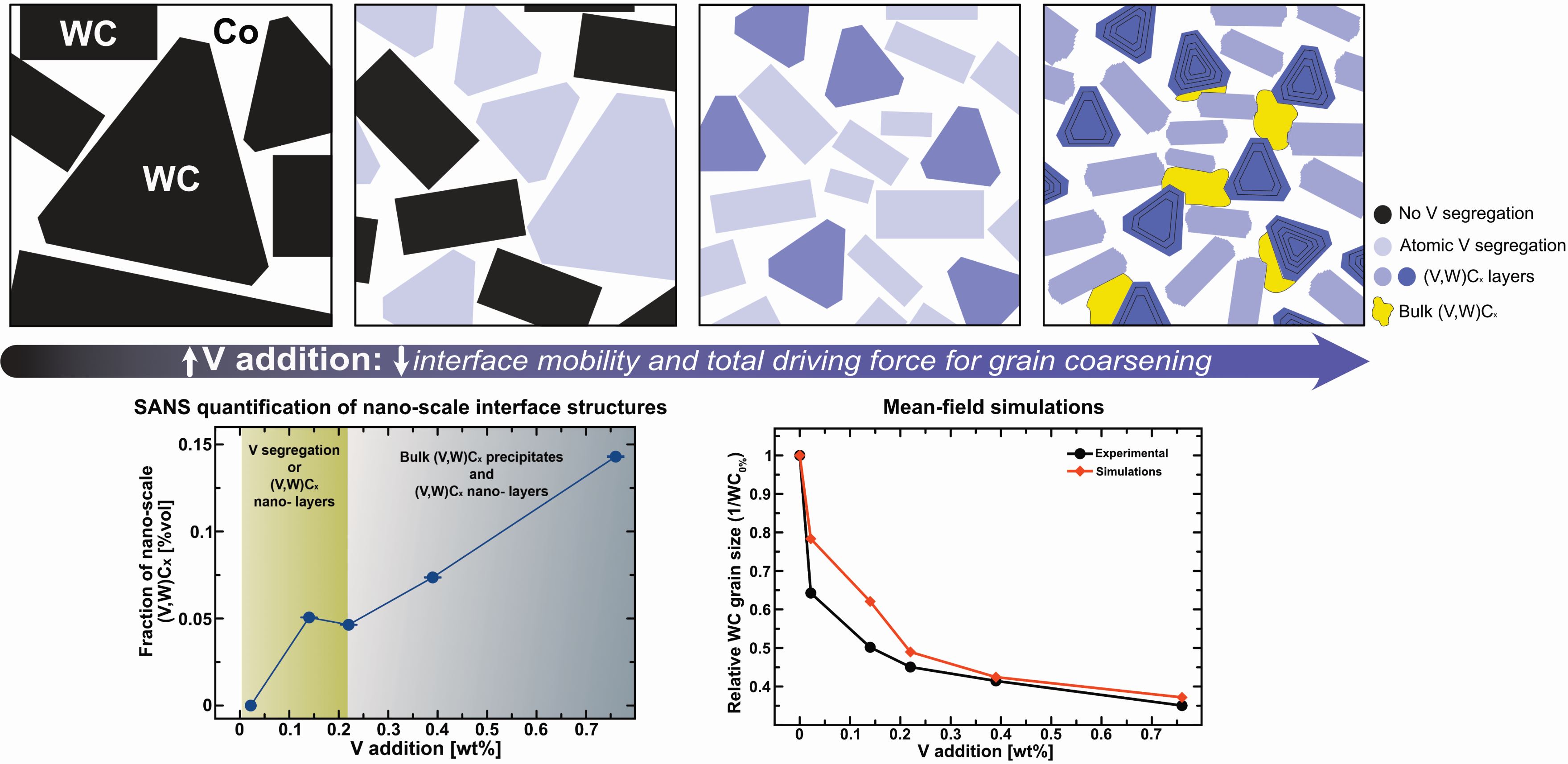SwedNess project: Neutron scattering studies of hard metals
Background
Hard metals, also known as cemented carbides, are composite materials manufactured via powder metallurgy. Their high hardness and wear resistance make them the choice of material in applications including metal cutting and rock drilling. The performance of hard metals relies on the as-sintered structure traditionally consisting of hard carbide phase (WC) and ductile Co-rich metallic binder. To tailor the composite structure and boost the performance of hard metals, it is necessary to control and understand the evolution of various structural parameters during sintering. Some of the structural parameters that will be considered within the project are phase fractions, carbide grain size, carbide grain shape, carbide nanostructure, and binder pocket size. Optimizing these structures relies heavily on advanced bulk experimental characterization and computational modeling to understand and tailor the behavior of the material during processing. However, the poor penetration of X-ray beams in materials made of heavy elements such as W and Co makes neutron scattering the only viable technique to probe the bulk of hard metals during processing at high temperatures (~1400 °C) and in service. Whilst small angle neutron scattering (SANS) makes it possible to characterize the nanostructure, including nano-particle size, size distribution, and volume fraction; neutron powder diffraction (NPD) enables the measurement of residual stresses and phase fractions. Thus, neutron scattering will be exploited to study the microstructural evolution during the processing of hard metals.
Purpose and aim
By performing neutron scattering experiments, we aim at developing a better understanding of nano- and microstructural evolution during the sintering of hard metals. One essential outcome of the project will be the know-how developed regarding the neutron scattering of hard metals, including sample preparation, sample environments, and data analysis.
Project plan
Within the project, phenomena including grain coarsening inhibition by cubic carbide additions and decomposition in alternative carbide systems will be investigated. The best available in-house characterization and modelling tools will be complemented by ex-situ and in-situ SANS and NPD experiments. The project also includes design of novel carbide compositions to use together with or replace WC. The project will be performed under five work packages (WPs):
WP 1: Feasibility studies (Figure 1)
WP 2: Understanding of grain coarsening inhibition (Figure 2)
WP 3: Design and production of novel carbide phases
WP 4: Development of sample environment components for in-situ experiments
WP 5: Understanding of phase separation in novel carbide compositions
This project is performed in close collaboration with Swedish industry.


Funding agency
SSF through SwedNess.
Beginning and end dates
2017-06-01 to 2022-01-01.
Project contacts
More information
N/A
